Trustindex verifies that the original source of the review is Google. I contacted radiant solutions company through their contact us tab on the website. Matt answered my email very promptly. I had a few more questions so I sent him another email and he called me right back by phone instead of chatting back-and-forth n email. He took the time to answer all my questions and give me inside tips on installation. I highly recommend them and I highly recommend Matt as a sales / customer service representative.Posted onTrustindex verifies that the original source of the review is Google. We are so pleased with the service and product from this company. The self regulating pipe heating cables that we have purchased have kept our pipes in our RV from freezing and running smoothly in this super cold winter. They have been easy to install and monitor. I would highly recommend ALL of the products from this company.Posted onTrustindex verifies that the original source of the review is Google. I've worked with these guys a few times now and they've been super helpful every time and are great to work with!Posted onTrustindex verifies that the original source of the review is Google. Amazing products and the best customer service! Have used them for a while and will continue to do so. This company is great to work with.Posted onTrustindex verifies that the original source of the review is Google. This is a fantastic company with well thought out and high-quality products. The 'kits' for cable ends, tees and terminals are complete and easy to install. All instructions are complete and excellent support is available. The paper installation manual is a complete planning and installation guide. Company support is first rate. Highly recommended vendor.Posted onTrustindex verifies that the original source of the review is Google. Excellent products from an outstanding company. Very glad everything is American made and it shows! I contacted the company twice before ordering and I received an answer within the hour. Shipping was vey fast since I ordered on Friday and was delivered on Monday! The 10 year warranty is superior and instructions are clear. There is not another heat cable on the market that even come close to these guys.Posted onTrustindex verifies that the original source of the review is Google. Great installation of heat tape on two roof sections. Installer showed up on time, did a professional job, and checked that it worked.Posted onTrustindex verifies that the original source of the review is Google. As an installer of Heat Tape on homes, Radiant Solutions provides super high quality heat cable. It’s a mix of ease of installation and some of the best customer support that makes this above and beyond expectations. The waves this cable creates in rooflines is very satisfying to install and look at. Grip Clips are the best and strongest way to securely mount it to the roofline.Posted on
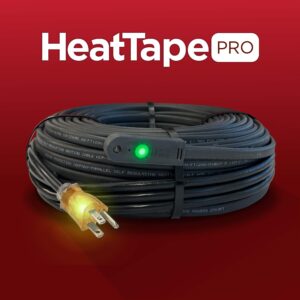
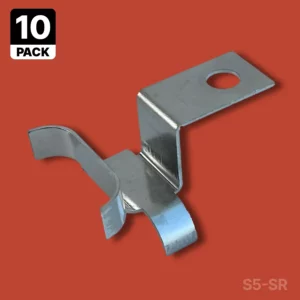
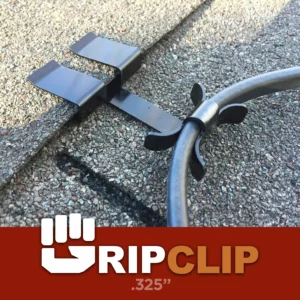
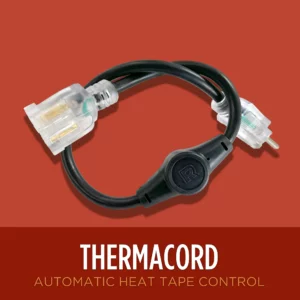

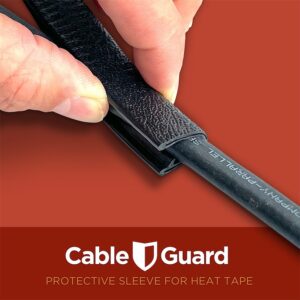
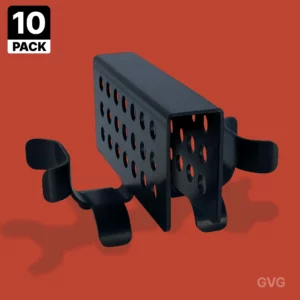
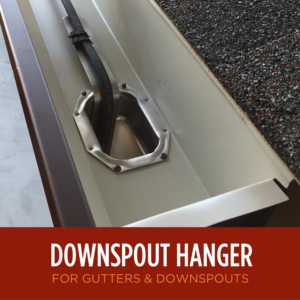
Our cables operate at between 40ºF to 90ºF so they will not melt or damage any surface or material they come into contact with. Except chocolate. Our cables will thoroughly melt chocolate.
Yes. Pipe Freeze Pro can be used on any commonly available pipe material including PEX, PVC, ABS, galvanized steel, copper and cast iron. This cable operates at somewhere between 40ºF and 90ºF so it will not melt anything.
Like Heat Tape Pro, Pipe Freeze Pro should not be installed on pipes that regularly heat up to over 150ºF as this may cause longterm damage to the heat cable. It therefore depends on how hot you have your water heater set to. On average, water heaters are set to about 140ºF to prevent scalding.
Heat Tape purchased in big-box stores is most often constant wattage heat tape. “Constant Wattage” means: it’s always on. It is always drawing full power and is costing you peak energy expenses, which –over the length of a season can add up huge. Thought you were saving money on that heat tape you got at that home improvement store? Guess again.
Radiant Solutions’ Heat Tape PRO™ heating cable is Self-Regulating. This means, as the temperature gets colder, the cable creates more heat by drawing more power and when it gets warmer it creates less heat by drawing less power. This allows you to consume only the energy you need to help protect your home from damage caused by the ice and cold.
The core of our ice dam heat tape is comprised of two bus wires encased in a material that is infused with carbon. As ambient temperatures decrease, the core material shrinks pulling the bus wires closer to each other, creating more electrical pathways through the carbon which makes the cables heat up. When ambient temperatures get warmer, the inner core expands and the cable demands less energy and creates less heat.
No, not really. Because any control or switch is still going to tell your constant wattage cable to be either off or on at 100% power. It is very binary. Conversely, Self-regulating Heat Tape will output variable temperatures based on the external, ambient temperature. So when it’s 31ºF or 10ºF constant wattage heat tape will always be on full heat, where self-regulating heat tape will only use just enough power to be at the temperature you need to prevent ice dams on the roof or frozen pipes around your property.
Among other things, constant wattage heat cable cannot be overlapped without creating risk of over heating or shorting out. It cannot be used under 15°F, it cannot be used on wood roofs, rubber roofs, metal roofs, or anything other than asphalt shingle roofs. You must clean combustibles such as leaves away from constant wattage cable throughout the operating season. The warranty on most constant wattage heat cable systems is no more than two years. Lastly, unlike self-regulating heat cable systems, constant wattage heat cables cannot be repaired in the field if they are damaged. One knick in the jacketing, and the cable is done.
While the cable itself can be exposed to moisture you should keep the thermostat in a dry location.
See Below
Measuring is not difficult and you can make measurements without going up on your roof or using a ladder if you err on the side of overestimating the distances. Here’s Radiant Solutions Guide to Measuring for Heat Tape, which gives a detailed overview of measuring and some tips and resources, if you think you need it.
Once you have your measurements, you can use our Heat Tape Calculator to help you determine the length of Heat Tape Pro you need, the number of Heat Tape Clips you’ll need, and misc. product considerations.
Heat Tape Pro & Piper Freeze Pro can both overlap and/or touch itself in your installation.
It’s fine to overlap your heat tape pro, or have it touching itself in your install. The cable only itself heats up to less than 100ºF at most. This is plenty of warmth to stop ice dams from forming, but isn’t that much warmer than the temperature of your body. Sometimes it won’t even feel that warm to the touch.
This is different than a lot of heat tape that can be purchased at stores: contestant wattage cable can get much hotter and can even be dangerous if you overlap them. Not our cable, however.
Pipe Freeze Pro can touch itself, overlap with itself, or be wrapped around itself on the pipe. It won’t get too hot because not only is it designed to have a maximum output temperature that is less than 100ºF, it is self-regulating –so it’s output adjusts to the ambient temperature near the cable.
The terms heat cable, heat tape and heat trace are all used interchangeably to described heated cables used to protect pipes from freezing, preventing roof and gutter ice dams from forming and for safeguarding temperature sensitive components.
Other terms we’ve seen used regarding Heat Tape are: